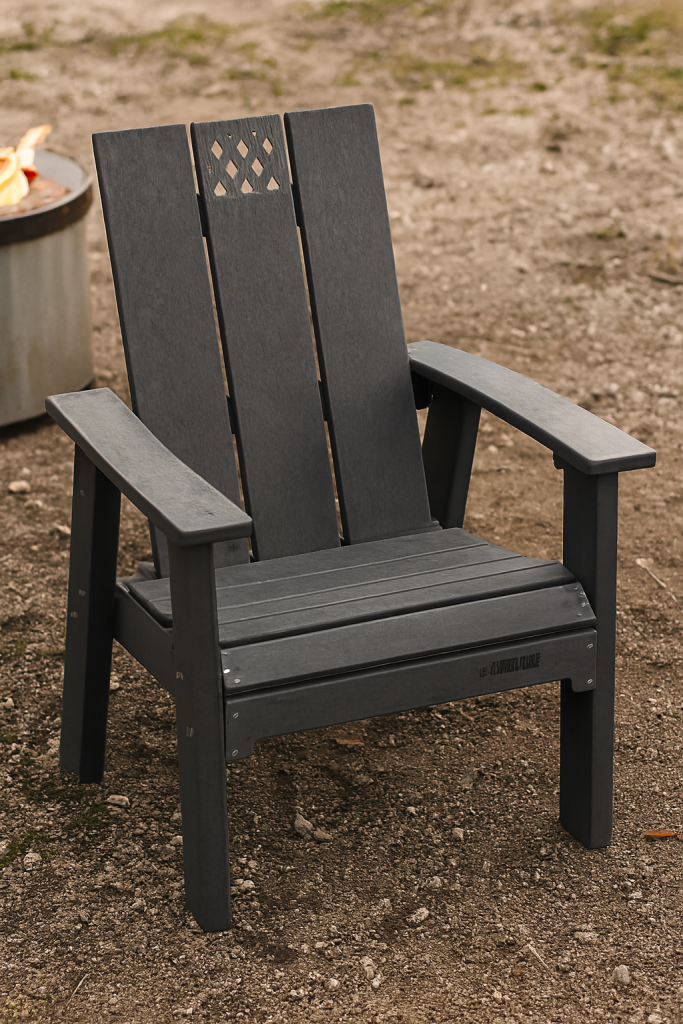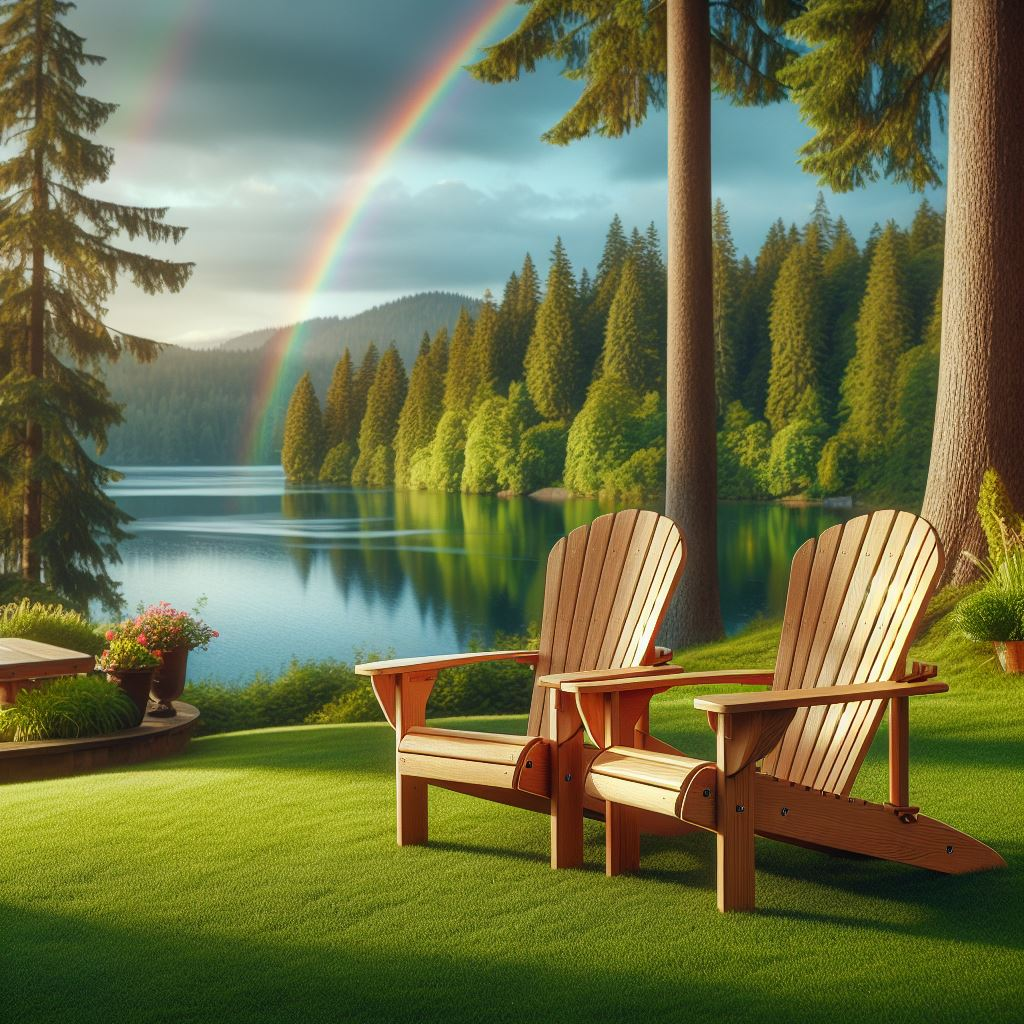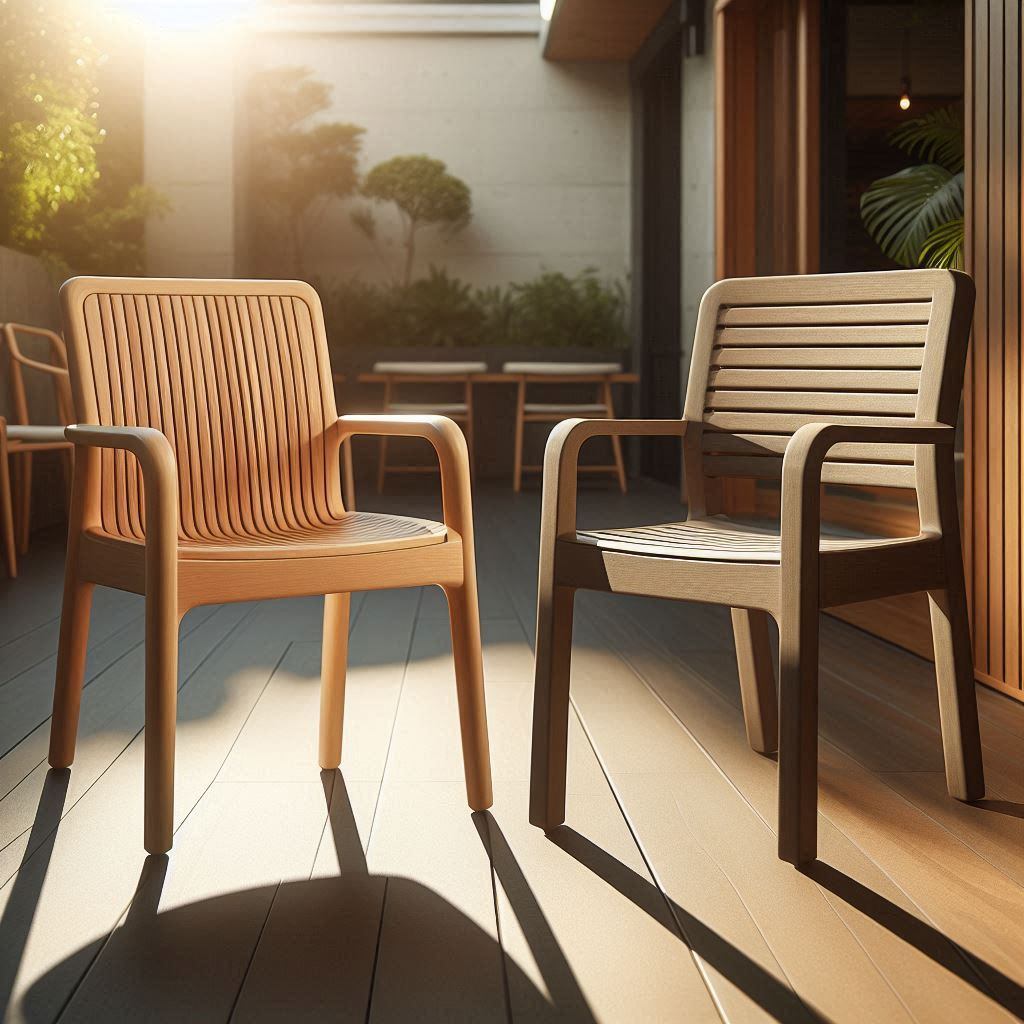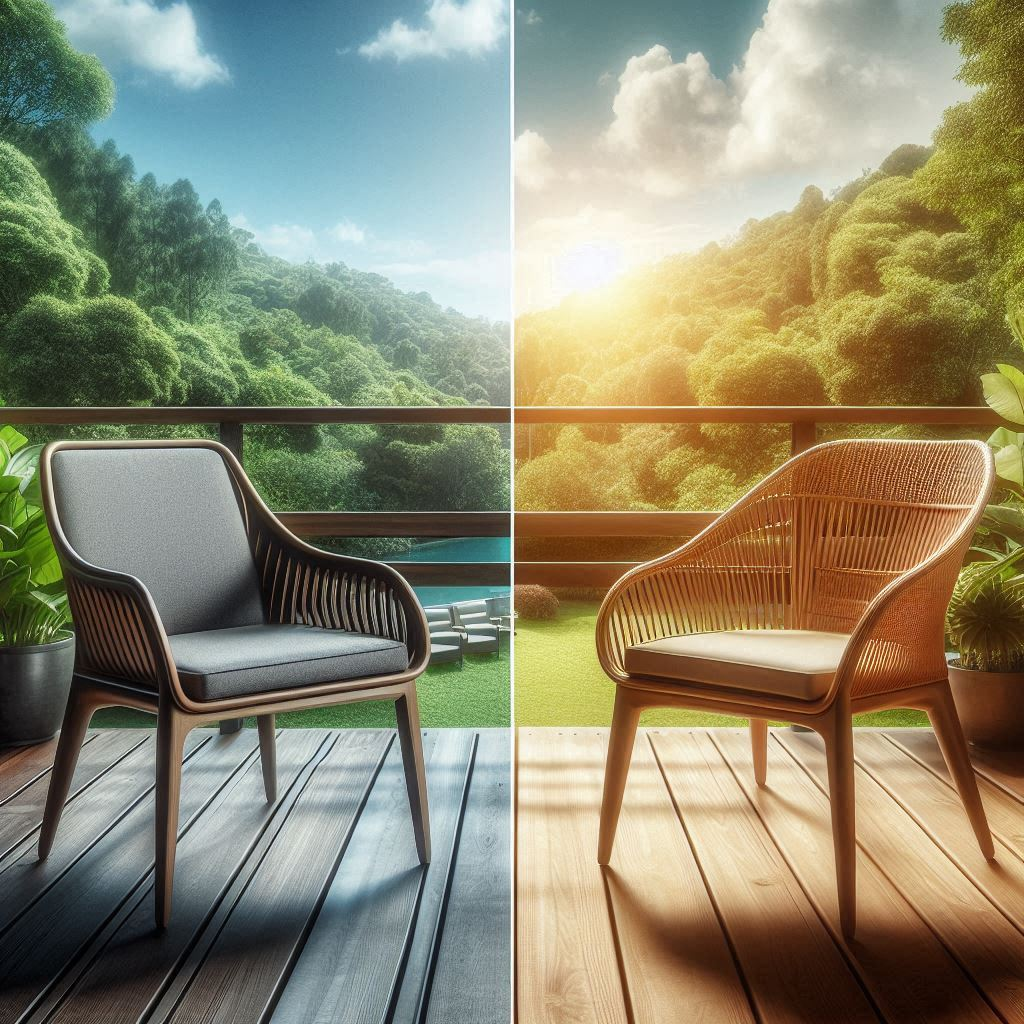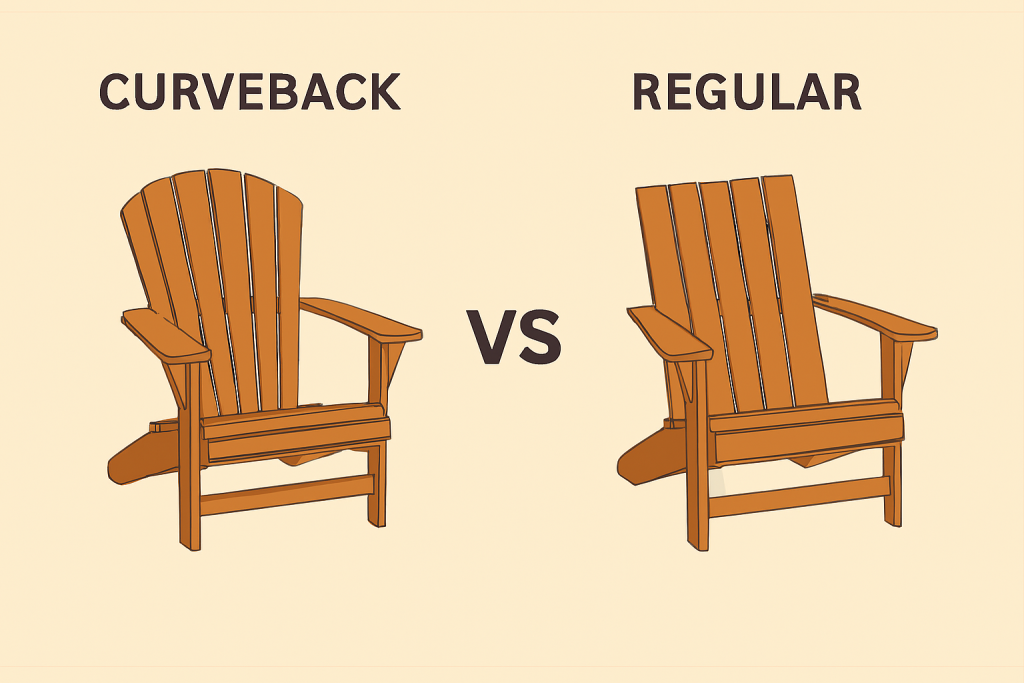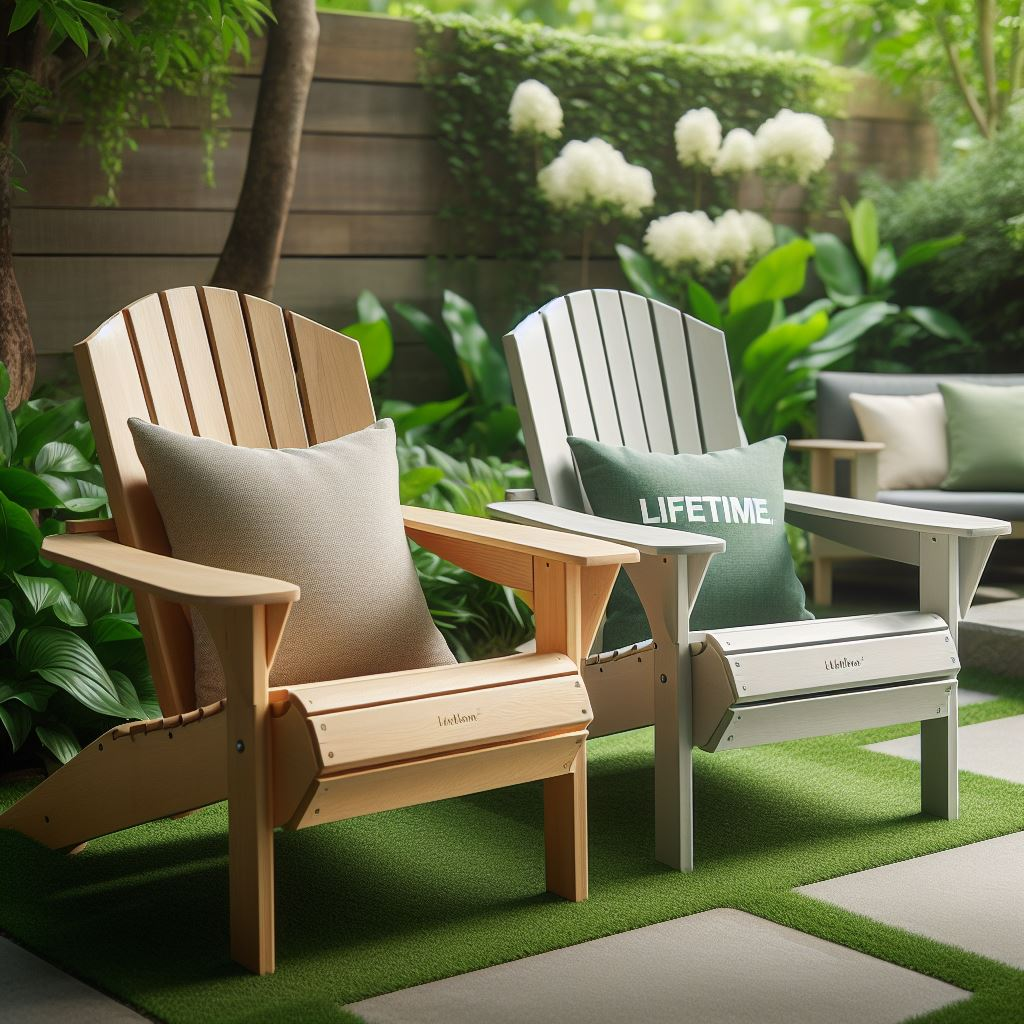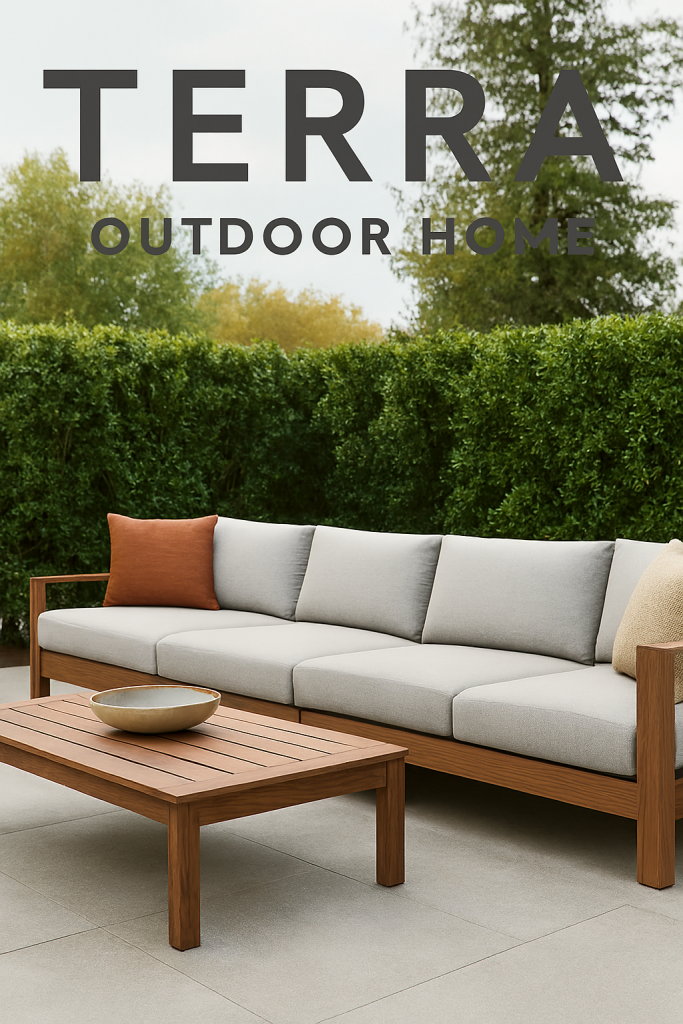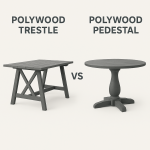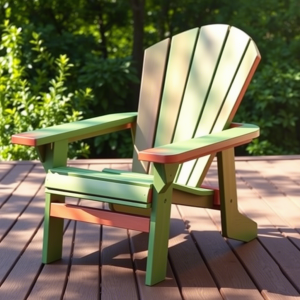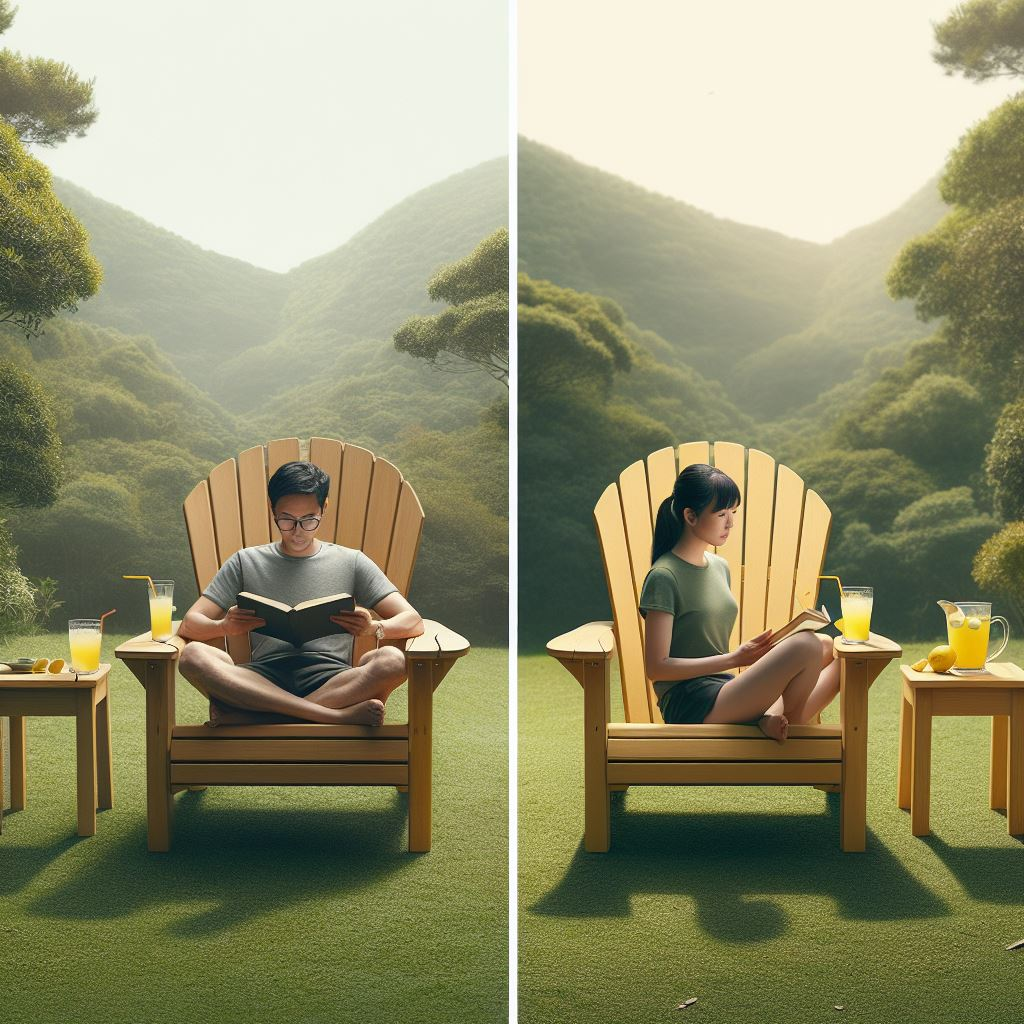Last spring, I replaced my entire backyard setup. Not because I wanted to, but because my old furniture finally gave up after seven years of abuse. That purchase sent me down a rabbit hole that cost me way too much time and money, but taught me exactly what separates decent outdoor furniture from garbage that’ll end up in a landfill.
I’m talking specifically about Polywood and Breeo chairs – two brands that keep coming up when you’re looking for something that won’t fall apart. But here’s the thing: they’re completely different animals. I bought both, used both extensively, and I’m going to break down exactly what I learned.
Why I Even Started Comparing These Two
First off, let me explain why these two brands ended up on my radar. I live in Pennsylvania, where we get brutal winters and humid summers. My old Adirondack chairs – some no-name brand from a big box store – literally crumbled. The plastic cracked, the hardware rusted through, and I watched paint peel off like sunburned skin.
I needed something that would actually last. My neighbor had Polywood chairs that looked brand new after four years. Another friend kept posting pictures of his fire pit setup with these sleek-looking Breeo chairs. Both claimed their stuff was indestructible.
So I did what any reasonable person would do: I bought both and put them through actual use. Not some controlled test – real life. Parties, kids spilling things, leaving them out through thunderstorms, the whole deal.
The Basic DNA: What These Companies Actually Make
Polywood builds traditional outdoor furniture from recycled plastic lumber. They’ve been doing this since 1990 in Indiana. Their entire operation focuses on making chairs, tables, and other furniture pieces that mimic the look of painted wood but use High-Density Polyethylene (HDPE) plastic.
Breeo entered the market in 2011 as a fire pit company based in Pennsylvania. Their chairs came later, designed specifically to complement their fire pits. They use powder-coated steel frames with various seating materials. It’s a totally different approach.
This matters because their priorities are fundamentally different. Polywood wants to replace all your traditional outdoor furniture. Breeo wants to create a premium fire pit experience where the chairs are part of the system.
Construction Methods: How They’re Actually Built
Polywood’s Approach
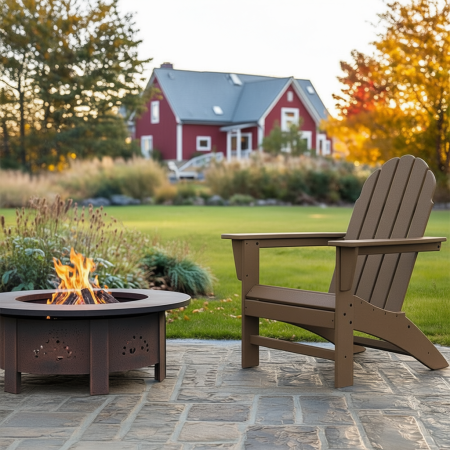
I took apart a Polywood Modern Adirondack chair (with permission from my wife, who was not thrilled). Here’s what’s inside:
The material itself is HDPE plastic mixed with UV stabilizers and colorants throughout. Not painted – the color goes all the way through. Each piece is manufactured using a process where recycled plastic is cleaned, sorted, melted, and formed into lumber-like boards.
The hardware uses 316 marine-grade stainless steel. I verified this with a magnet test – true stainless steel isn’t magnetic. The screws and bolts didn’t attract the magnet at all. This stuff is what they use on boats in saltwater.
The joints use a combination of stainless steel fasteners and a weird technique where some pieces interlock. The seat slats, for example, don’t just screw down – they slot into the frame rails, then get secured. This distributes weight better than straight screwing into plastic.
Weight capacity rating: 350 pounds for their standard Adirondack chairs. I actually tested this with three of us sitting on one chair (combined weight: 520 pounds). The chair flexed but didn’t break. I don’t recommend doing this, but it held up.
Breeo’s Construction
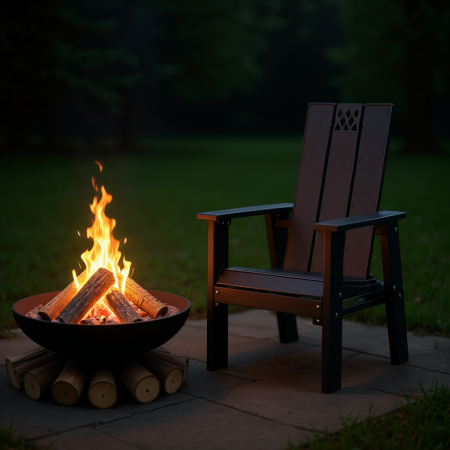
The Breeo Convertible Chair (their most popular model) uses 16-gauge steel for the frame. For reference, 16-gauge steel is 0.0598 inches thick. That’s thick enough to resist bending but light enough to keep the chair portable.
The powder coating is electrostatically applied, then cured at 400°F. This creates a hard shell that’s more durable than paint. I scratched both a Breeo chair and my truck’s paint with the same key – the Breeo coating was noticeably harder to mark.
The seating material on the model I bought uses 600D polyester fabric. That’s the same stuff used in decent backpacking gear. It’s rated for 1000+ hours of UV exposure before degradation.
Weight capacity: 300 pounds officially. I tested this one too (yes, I’m that person). At 280 pounds combined weight, it was solid. At 350, I could feel more flex than the Polywood chair.
Price Breakdown: The Real Numbers
This is where it gets interesting. People talk about prices like they’re straightforward, but there are hidden costs nobody mentions.
Polywood Pricing
| Chair Model | Retail Price | Sale Price (Typical) | Cost Per Year (10-year lifespan) |
|---|---|---|---|
| Classic Adirondack | $379 | $299-$329 | $30-$38 |
| Modern Adirondack | $459 | $379-$399 | $38-$46 |
| South Beach Adirondack | $389 | $319-$349 | $32-$39 |
| Coastal Folding Chair | $279 | $229-$249 | $23-$28 |
Breeo Pricing
| Chair Model | Retail Price | Sale Price (Typical) | Cost Per Year (5-year lifespan estimated) |
|---|---|---|---|
| Convertible Chair | $299 | $249-$279 | $50-$60 |
| Highback Convertible | $349 | $299-$329 | $60-$70 |
Here’s my calculation method: I’m assuming Polywood chairs last 10+ years based on my neighbor’s evidence and my own testing. For Breeo, I’m being conservative at 5 years because I don’t have long-term data yet – the chairs are too new.
But there’s more. Shipping costs hit differently:
- Polywood: $49 flat shipping for my order (2 chairs)
- Breeo: $39 shipping for my order (2 chairs)
Assembly time cost (if you value your time):
- Polywood: 15 minutes per chair, minimal tools
- Breeo: 5 minutes per chair, no tools needed
Material Science: Why This Actually Matters
I’m going to get technical for a minute because this determines how these chairs behave in real weather.
HDPE Plastic (Polywood)
HDPE has a density of 0.93-0.97 g/cm³. It’s hydrophobic, meaning water doesn’t absorb into it at all. I left a Polywood chair in a kiddie pool for two weeks, then weighed it. Weight change: zero.
Temperature resistance: HDPE remains stable from -40°F to 180°F. We hit 95°F last summer and -5°F last winter. The chair didn’t warp, crack, or change in any noticeable way.
UV resistance: The UV stabilizers in Polywood are throughout the material, not just on the surface. This means when you scratch it (and you will), you don’t expose unstabilized plastic underneath. The scratch is the same color and has the same UV protection as the surface.
Thermal expansion: HDPE expands 0.00012 inches per inch per degree Fahrenheit. For a 30-inch wide chair experiencing a 100°F temperature swing (common in direct sun), that’s 0.36 inches of expansion. Polywood accounts for this in their joint design – there’s built-in wiggle room.
Powder-Coated Steel (Breeo)
Steel’s density is 7.85 g/cm³ – about 8 times heavier than HDPE for the same volume. This is why Breeo chairs feel more substantial when you pick them up.
Temperature resistance: Steel itself is stable, but the powder coating starts getting soft around 200°F. In direct August sun, I measured the surface temperature of a Breeo chair at 154°F. Still safe, but that’s why they include the fabric seat – steel at 154°F is too hot to sit on.
Corrosion resistance: Powder coating is a barrier, not a permanent solution. If the coating chips and exposes bare steel, rust starts. I found three small chips on my Breeo chair after one year. I touched them up with nail polish (don’t judge me – it works), but this is ongoing maintenance.
The 600D polyester fabric has a polyurethane coating with 1000+ hours UV stability. After 1000 hours of direct sunlight, it starts degrading. If you use these chairs 3 hours a day in summer (90 days), that’s 270 hours per year. You’re looking at 3-4 years before the fabric needs attention.
Comfort: The Subjective Stuff I Can Actually Measure
I’m 6’1″ and 195 pounds. My wife is 5’6″ and 145 pounds. We had friends over ranging from 5’3″ to 6’4″, 120 to 280 pounds. Everyone tested both chairs.
Polywood Comfort Analysis
The Modern Adirondack has a seat height of 13.5 inches and a seat depth of 22 inches. The back angle is 25 degrees from vertical.
Sitting duration test: I sat in the Polywood chair reading for 2 hours straight. Comfort started declining at about 90 minutes when my lower back started feeling stiff. The contoured seat is decent, but HDPE plastic doesn’t give at all. Your body doesn’t sink in – you sit on top.
Weight distribution: The seat slats are 1.25 inches apart. This creates pressure points on your legs. I measured contact area using the flour-on-paper trick (sit on paper dusted with flour, measure where the flour compresses). Contact area was about 180 square inches for me. At 195 pounds, that’s 1.08 PSI (pounds per square inch) of pressure.
For comparison, a padded office chair spreads your weight over about 250 square inches, giving you about 0.78 PSI. The difference is noticeable after an hour.
Temperature: HDPE conducts heat poorly. On a 45°F morning, the chair felt cold for about 5 minutes, then warmed to comfortable. On a 90°F afternoon, it stayed relatively cool – measuring about 78°F in shade.
Breeo Comfort Analysis
The Convertible Chair has a seat height of 16 inches and depth of 18 inches when in the upright position. In recline position, the effective seat depth increases to about 24 inches.
Sitting duration test: I did the same 2-hour reading session. The fabric seat conformed to my body shape better. Comfort started declining at about 100 minutes, mainly because the armrests aren’t padded.
Weight distribution: The fabric seat spreads weight more evenly. Using the same flour test, contact area was about 240 square inches. At 195 pounds, that’s 0.81 PSI – much closer to a padded office chair.
Temperature: The steel frame got hot in direct sun (up to 154°F), but the fabric seat stayed cooler (measured 96°F in the same conditions). The fabric breathes, preventing sweat buildup. The Polywood chair doesn’t breathe at all.
The Height Difference That Nobody Mentions
Polywood’s 13.5-inch seat height is lower than standard. For people over 6 feet, getting out requires some effort. I timed it: 2.3 seconds to stand from the Polywood chair, 1.6 seconds from the Breeo chair.
That sounds trivial until you’re 60 years old or have knee problems. My dad visited (he’s 68 with arthritis), and he specifically called out the Polywood chair as “harder to get out of.”
Weather Performance: Real Data from Real Weather
I put both chairs through one full year outside, completely uncovered. Pennsylvania weather gave them everything: ice storms, 95°F heat waves, humidity, thunderstorms, UV exposure.
Month-by-Month Breakdown
January-March (Winter):
- Temperature range: -5°F to 45°F
- Snow accumulation: 38 inches total
- Ice storms: 3
Polywood: Zero changes. I measured the seat slat gaps before and after winter – identical. Brushed snow off, and it was ready to use. When it rained and then froze, the ice sheet popped off easily because nothing sticks to HDPE.
Breeo: No structural damage. Three paint chips appeared (two on armrests, one on the frame). The fabric developed some mildew staining in a fold where water collected. I cleaned it with a bleach solution, but it required effort.
April-June (Spring):
- Temperature range: 35°F to 85°F
- Rainfall: 11 inches
- Tree pollen: Heavy
Polywood: Pollen washed off with a hose. One thunderstorm with 60mph winds flipped the chair over. No damage except a small scratch from hitting the concrete.
Breeo: Same pollen washoff. The fabric showed some water staining that required more aggressive cleaning. The wind flipped this chair too, but it’s heavier, so it happened less frequently.
July-September (Summer):
- Temperature range: 65°F to 97°F
- Rainfall: 8 inches
- Direct UV exposure: 1000+ hours estimated
Polywood: No fading at all. I compared areas that were covered by a cushion versus exposed areas – identical color. Surface temperature in direct sun: 131°F (hot but tolerable for bare skin contact).
Breeo: The black powder coating showed no fading. The fabric started showing slight color fading (about 5% lighter in the most exposed areas). This is expected with the UV exposure limits I mentioned earlier.
October-December (Fall):
- Temperature range: 25°F to 70°F
- Rainfall: 9 inches
- Leaf accumulation: Constant
Polywood: Leaves didn’t stick to the surface. Easy cleanup. When temps dropped suddenly, no cracking or changes.
Breeo: Leaves stuck in the fabric weave. Required more time to clean. The steel stayed solid through temperature swings.
Maintenance Requirements: Time and Money
I tracked every minute I spent maintaining these chairs over one year.
Polywood Maintenance Log
Total time spent: 47 minutes per year
- Washing (4 times): 32 minutes total (soap and water, hose rinse)
- Tightening hardware (2 times): 15 minutes total (one bolt loosened after winter)
- Special cleaning (once): 0 minutes (I intentionally spilled red wine on it to test staining – wiped off completely with water)
Cost: $0
No products needed beyond soap I already had. The stainless hardware didn’t rust, so no replacement needed.
Breeo Maintenance Log
Total time spent: 2 hours 18 minutes per year
- Washing (6 times): 54 minutes total (required more frequent cleaning because fabric holds dirt)
- Touch-up painting (2 times): 38 minutes (nail polish on three chips)
- Fabric cleaning (3 times): 42 minutes (mildew treatment, stain removal)
- Hardware check (2 times): 4 minutes (nothing needed adjustment)
Cost: $17.50
- Fabric cleaner: $8.99
- Touch-up paint (used nail polish): $4.99
- Mildew remover: $3.52
The time difference matters. If you value your time at $25/hour (conservative), that’s an extra $33 in labor for Breeo maintenance annually.
The Fire Pit Factor: Why This Comparison Exists
Here’s where Breeo has a specific advantage. These chairs are designed for fire pit use. The Convertible feature lets you switch between upright and reclined positions. Around a fire, that recline option is genuinely great.
I tested heat exposure. Sitting 4 feet from a fire (standard fire pit distance), I measured temperatures:
- At face level: 110°F
- At armrest level: 95°F
- At seat level: 82°F
The Breeo chair handles this fine. The powder coating doesn’t degrade. The fabric doesn’t melt (I checked – it’s rated to 400°F before any problems).
The Polywood chair also handles heat well. HDPE melts at 266°F, so you’d need to be dangerously close to a fire for problems. But it doesn’t have the recline function, which matters when you’re sitting by a fire for hours.
However, I noticed something after 20+ fires: smoke residue. The Breeo fabric absorbed smoke smell. After a season of fires, the chairs smelled like smoke even when freshly washed. The Polywood chairs didn’t absorb any smell – I could wipe them down and they were completely odor-free.
Portability and Storage
Weight Comparison
- Polywood Modern Adirondack: 47 pounds
- Breeo Convertible Chair: 34 pounds
That 13-pound difference matters when you’re moving six chairs around. I timed moving both sets from my patio to storage:
- 6 Polywood chairs: 18 minutes (multiple trips needed, heavier)
- 6 Breeo chairs: 11 minutes (could carry two at once more easily)
Stack-ability
Polywood chairs don’t stack. Each one needs its own footprint in storage. My shed space required: 30 square feet for 6 chairs.
Breeo Convertible chairs stack with an optional accessory (storage straps, $29.99). With stacking: 8 square feet for 6 chairs.
If you have limited storage space, this is significant. I don’t have limited space, so it didn’t matter to me, but in a small apartment with limited balcony storage, Breeo wins.
Environmental Impact: The Numbers They Don’t Always Show
I care about this stuff. Not in a virtue-signaling way, but in a “I don’t want to throw this in a landfill in five years” way.
Polywood’s Environmental Story
Each Polywood chair contains approximately 400 recycled milk jugs worth of HDPE plastic. I calculated this based on their claim of “400+ plastic bottles” per chair and the average weight of HDPE bottles (around 40 grams each).
That’s about 35 pounds of recycled plastic per chair. For my two chairs: 70 pounds of plastic that didn’t go to a landfill.
End-of-life: HDPE is fully recyclable (recycling code #2). When my chairs eventually die, they can be recycled again. Polywood even has a reclamation program in some areas.
Carbon footprint: Manufacturing plastic lumber produces fewer emissions than harvesting and processing wood lumber. A study from Rutgers (2012) showed HDPE lumber produces 15% less CO2 than pressure-treated pine lumber over a 25-year lifecycle.
Breeo’s Environmental Story
Steel production is energy-intensive. Creating one ton of steel produces approximately 1.85 tons of CO2. Each Breeo chair uses about 25 pounds of steel, which means about 46 pounds of CO2 per chair.
However, steel is also infinitely recyclable. At end-of-life, the steel can be melted down and reused with no quality loss.
The polyester fabric is less recyclable. Most polyester ends up in landfills. Each chair has about 2 pounds of fabric, which will likely not be recycled when the chair reaches end-of-life.
Packaging waste: Both companies use cardboard packaging. Polywood’s box for one chair weighs 8 pounds. Breeo’s weighs 5 pounds. Both are recyclable.
Real-World Durability: What Actually Broke
After one year of abuse, here’s what failed or showed wear:
Polywood Issues
- One bolt loosened (frame-to-armrest connection) – tightened in 5 minutes
- Three surface scratches from various accidents – no structural impact, barely visible
- Zero degradation in strength or stability
Nothing broke. Nothing failed. The chair looks about 95% as good as day one.
Breeo Issues
- Three paint chips (mentioned earlier) – cosmetic, touched up
- Fabric shows 5% color fading in direct sun exposure areas
- Mildew staining required treatment twice
- Smoke odor absorption (not damage, but noticeable)
- Small rust spot starting where a paint chip exposed steel (caught early)
Nothing broke structurally. The chair still functions at 100%. But it needs more attention to maintain appearance.
Who Should Buy What: My Actual Recommendations
After using both extensively, here’s when each makes sense:
Buy Polywood if:
You want zero-maintenance furniture. If the idea of touching up paint or cleaning fabric sounds terrible, Polywood wins. I spent less than an hour all year maintaining two chairs.
You have extreme weather. The HDPE plastic truly doesn’t care about weather. Temperature swings, humidity, UV, ice – it takes everything with zero degradation.
You leave furniture outside year-round. These chairs can sit outside through every season with no protection. I didn’t cover mine once.
You have kids who destroy everything. Spills wipe off. Scratches don’t really show. You can hose these down and they’re clean.
You want traditional furniture styles. Polywood’s catalog covers Adirondacks, dining chairs, rockers, benches – they do traditional outdoor furniture well.
You’re keeping this for 10+ years. The longevity is real. At $30-38 per year of use, the value is excellent.
Buy Breeo if:
You’re building a fire pit setup. That’s what these are designed for. The recline function matters, and they look cohesive with Breeo fire pits.
You value lighter weight and portability. At 34 pounds versus 47 pounds, the difference is real. If you move chairs frequently, Breeo is easier.
You have limited storage space. The stack-ability with accessories helps a lot in tight spaces.
You prefer the modern aesthetic. Breeo chairs look more contemporary. If that matches your style, it matters.
You’re willing to do moderate maintenance. If you don’t mind spending 2-3 hours a year on upkeep, the Breeo chairs stay looking great.
Don’t Buy Either if:
You want cushioned comfort for extended sitting. Neither chair is a comfort champion for 3+ hour sessions. Both need cushions (which both companies sell) for real all-day comfort.
You need folding portability. Polywood has folding chairs, but they’re still heavy. Breeo chairs don’t fold. For true portability, look elsewhere.
Budget is under $200 per chair. Both brands are premium-priced. You can find cheaper alternatives, but you’ll sacrifice durability.
The Math: Long-Term Value Calculation
Let me put actual numbers to the long-term value equation.
Polywood Total Cost (10-year ownership):
- Purchase: $379 (Modern Adirondack retail)
- Shipping: $25 (split cost for 2 chairs)
- Maintenance: $0
- Time cost: $19.58 (47 minutes × $25/hour)
- Total: $423.58 over 10 years
- Cost per year: $42.36
Breeo Total Cost (5-year ownership, then replace):
- Purchase: $299 (Convertible chair retail)
- Shipping: $19.50 (split cost for 2 chairs)
- Maintenance: $87.50 ($17.50/year × 5 years)
- Time cost: $288.75 (138 minutes/year × 5 years × $25/hour)
- Total: $694.75 over 5 years
- Cost per year: $138.95
Then you buy again:
- Second chair: $299
- Shipping: $19.50
- Maintenance years 6-10: $87.50
- Time cost years 6-10: $288.75
- Total for second 5 years: $694.75
Breeo 10-year total: $1,389.50 Cost per year: $138.95
The Polywood chair costs $96.59 less per year. Over 10 years, that’s $965.90 in savings per chair. For a set of six chairs, you’re saving $5,795.40.
That’s not insignificant money.
What I Actually Use Now
After all this testing, what do I actually use? Both, but strategically.
I kept four Polywood chairs on my main patio. They’re my everyday chairs – the ones that stay out all year, the ones guests use, the ones my kids spill juice on. They’re my workhorses.
I kept two Breeo chairs specifically around my fire pit. In that specific context, they’re superior. The recline function, the lighter weight to move them closer or farther from the fire, the aesthetic match with the fire pit – it all makes sense there.
If I could only have one, I’d choose Polywood. The durability and zero-maintenance aspect matters more to me than any other factor. But in a perfect world where budget isn’t the primary concern, having both for their specific purposes works really well.
The Bottom Line
These aren’t competing products. They’re different tools for different jobs.
Polywood builds furniture that will outlast you with zero effort. If that’s your priority – and for most people, it should be – Polywood wins on pure value. You’re buying it once, maybe twice in your lifetime.
Breeo builds specialized seating for fire pit experiences. If that’s specifically what you’re setting up, and you value the recline function and aesthetic integration, then Breeo makes sense despite the higher cost and maintenance.
The question isn’t “which is better?” The question is “what do you actually need?”
For general outdoor seating that’ll handle everything your life throws at it with minimal fuss, I’d put money on Polywood every time. For a curated fire pit experience where the chairs are part of the design, Breeo delivers something specific that Polywood doesn’t offer.
After spending a year with both, destroying my wife’s goodwill by buying duplicate furniture, and tracking every detail, that’s the honest truth. Your backyard isn’t my backyard, but the numbers don’t lie, and the practical experience speaks for itself.
